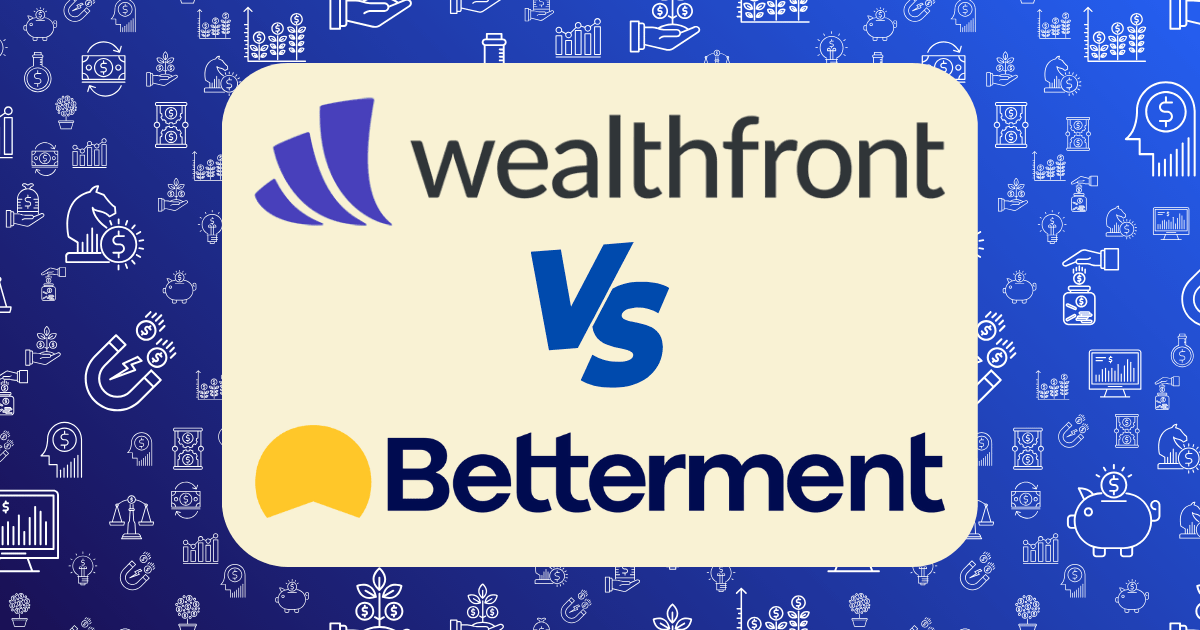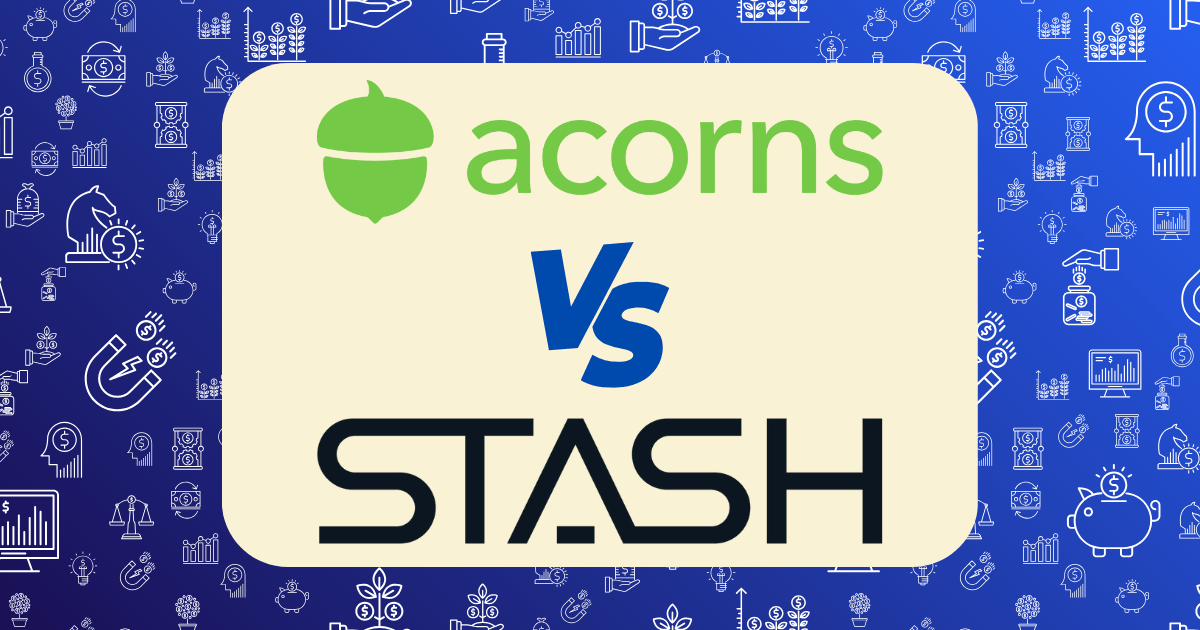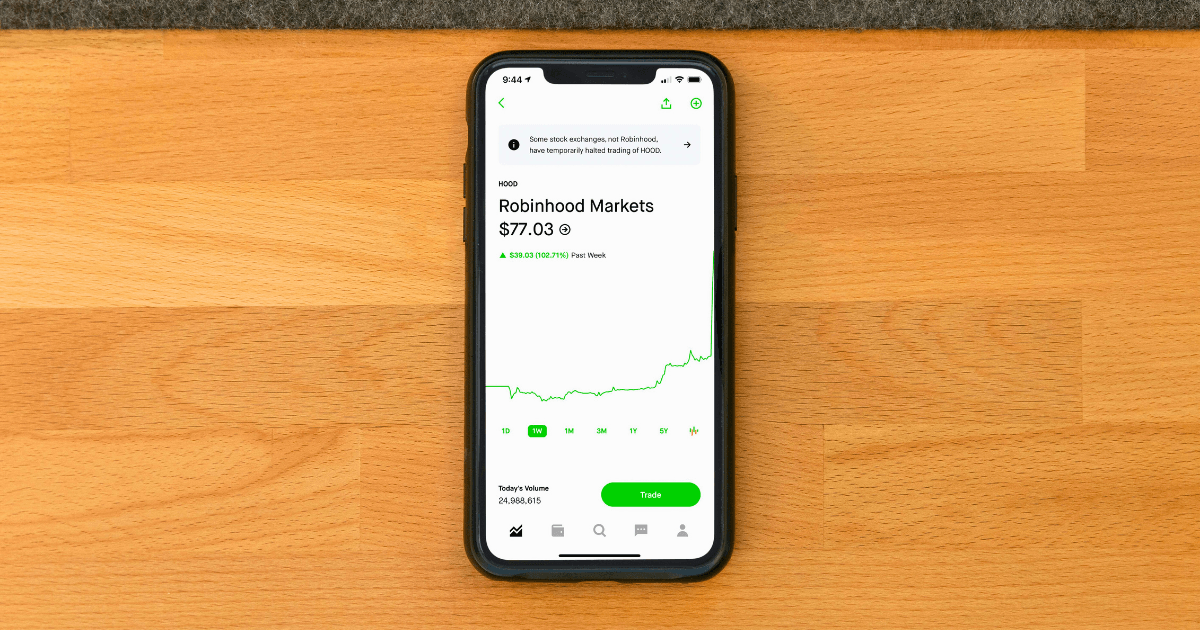Wealthfront vs Betterment: Which Robo-Advisor Performed Better With My $10K Investment?

When I began my journey toward financial independence, I quickly realized that optimizing investment returns—even by small percentages—could translate to tens of thousands of dollars over time. This understanding led me to experiment with robo-advisors, the algorithmic investment platforms promising sophisticated portfolio management at a fraction of traditional advisor costs.
Rather than rely on marketing claims or theoretical projections, I decided to conduct a real-world test: investing $10,000 in both Wealthfront and Betterment with identical risk profiles and time horizons. Today, after 12 months of tracking performance through various market conditions, I’m sharing the unfiltered results of this experiment—including which platform delivered superior returns and the psychological insights I gained along the way.
The Experiment: Creating a Fair Comparison
To ensure a valid head-to-head comparison between Wealthfront and Betterment, I structured my experiment with these parameters:
- Investment Amount: $10,000 in each platform
- Investment Date: May 15, 2024
- Risk Profile: Moderately aggressive (70% stocks, 30% bonds)
- Tax Settings: Tax-loss harvesting enabled on both platforms
- Dividend Treatment: All dividends automatically reinvested
- Additional Deposits: None during the 12-month period
- Withdrawals: None during the 12-month period
This controlled approach eliminated variables that might skew the results, allowing for a direct comparison of how each platform’s algorithms performed with identical starting conditions.
Why Robo-Advisors Matter for Wealth Building
Before diving into the performance data, it’s worth understanding why robo-advisors have become a cornerstone strategy for many wealth-building journeys.
As research from Vanguard has demonstrated, proper investment management can add approximately 3% in net returns annually through a combination of portfolio construction, behavioral coaching, and tax management. Robo-advisors aim to deliver much of this value at a fraction of the cost of traditional financial advisors.
The psychological benefit is equally significant. For many investors, including myself initially, the complexity of building and maintaining a properly diversified portfolio created analysis paralysis—leading to cash sitting idle or suboptimal investment decisions. Robo-advisors remove this barrier through automation and algorithmic optimization.
Platform Overview: Key Differences Between Wealthfront and Betterment
Before revealing the performance results, understanding the structural differences between these platforms provides important context:
| Feature | Wealthfront | Betterment |
| Founded | 2008 | 2008 |
| Assets Under Management | $40+ billion | $38+ billion |
| Minimum Investment | $500 | $0 ($10 to start investing) |
| Management Fee | 0.25% | 0.25% (or $4/month under $20k) |
| Average ETF Expense Ratio | 0.08% | 0.07-0.11% |
| Tax-Loss Harvesting | Daily for all taxable accounts | Available for all taxable accounts |
| Direct Indexing | Available for accounts >$100k | Not available |
| Human Advisor Access | No | Yes (Premium tier,0.40% fee) |
| Socially Responsible Options | Yes | Yes |
| Cash Management | 4.55% APY, up to $8M FDIC insured | 4.50% APY, up to $2M FDIC insured |
These structural differences create distinct investment experiences that impact not just returns, but also psychological comfort and long-term commitment to the investment strategy.
Performance Results: The Numbers Don’t Lie
Now for the data you’ve been waiting for—here’s how each platform performed over my 12-month investment period:
Overall Performance
| Platform | Starting Amount | Ending Value | Total Return | After-Fee Return |
| Wealthfront | $10,000 | $11,256 | 12.56% | 12.31% |
| Betterment | $10,000 | $11,187 | 11.87% | 11.62% |
Winner: Wealthfront by 0.69% (69 basis points)
While both platforms delivered solid returns during a generally positive market period, Wealthfront’s slight edge in performance resulted in an additional $69 on my $10,000 investment. This may seem small, but compounded over decades of investing, such an advantage becomes significant.
Performance During Market Volatility
The overall returns tell only part of the story. I also tracked performance during the market correction in August 2024, when the S&P 500 dropped 7.2% over a three-week period:
| Platform | Market Decline | Platform Decline | Difference |
| Wealthfront | -7.2% | -5.3% | +1.9% |
| Betterment | -7.2% | -5.1% | +2.1% |
Winner During Volatility: Betterment by 0.2% (20 basis points)
Interestingly, while Wealthfront performed better overall, Betterment showed slightly better downside protection during market stress. This suggests that Betterment’s algorithm may be optimized more for volatility reduction, while Wealthfront’s approach may prioritize total return.
Tax-Loss Harvesting Benefits
Both platforms tout tax-loss harvesting as a key advantage. Here’s how they performed in generating tax savings:
| Platform | Harvested Losses | Estimated Tax Benefit* |
| Wealthfront | $742 | $178 |
| Betterment | $683 | $164 |
*Assuming a 24% federal tax bracket
Winner for Tax Efficiency: Wealthfront by $14 in estimated tax savings
Wealthfront’s daily tax-loss harvesting approach appeared slightly more aggressive in identifying opportunities, generating about 8.6% more in harvested losses during the year.
Beyond Returns: User Experience Comparison
Investment performance is crucial, but the user experience significantly impacts long-term investing success by either encouraging or discouraging engagement with your financial plan.
Wealthfront User Experience
- Mobile App: Excellent (4.8/5)
- Dashboard Clarity: Outstanding visualization of asset allocation and performance
- Educational Content: Good but somewhat limited compared to Betterment
- Goal Setting Tools: Strong retirement planning, weaker for other goals
- Account Types Available: Individual, joint, trust, IRAs, 529 plans
- Customer Support: Email only, typically 1-2 day response time
Betterment User Experience
- Mobile App: Excellent (4.9/5)
- Dashboard Clarity: Very good with intuitive goal tracking
- Educational Content: Extensive library of articles and resources
- Goal Setting Tools: Excellent for multiple financial goals
- Account Types Available: Individual, joint, trust, IRAs
- Customer Support: Email and phone (Premium tier), typically same-day response
Winner for User Experience: Betterment
Betterment’s more intuitive goal-based interface and superior educational content created a better overall user experience. The availability of phone support (for Premium customers) also provides an additional safety net for questions or concerns.
Portfolio Construction: What’s Under the Hood
The investment strategies employed by each platform reveal important philosophical differences that may impact long-term performance:
Wealthfront Portfolio Composition
My moderately aggressive Wealthfront portfolio was allocated across these asset classes:
- US Total Market: 29%
- Foreign Developed Markets: 22%
- Emerging Markets: 15%
- Dividend Stocks: 4%
- US Corporate Bonds: 15%
- US Government Bonds: 7%
- TIPS: 5%
- Municipal Bonds: 3%
Betterment Portfolio Composition
My comparable Betterment portfolio had this allocation:
- US Total Market: 25%
- US Value Stocks: 10%
- Foreign Developed Markets: 18%
- Foreign Value Stocks: 8%
- Emerging Markets: 9%
- US Corporate Bonds: 14%
- US Government Bonds: 10%
- International Bonds: 6%
Key Differences: Betterment places a stronger emphasis on value stocks and includes international bonds, while Wealthfront has higher emerging markets exposure and includes TIPS and municipal bonds.
These allocation differences explain some of the performance variation. During my test period, emerging markets outperformed value stocks, giving Wealthfront an edge. In different market conditions, these results could easily reverse.
The Psychological Edge: Behavioral Finance Insights
Perhaps the most valuable aspect of my experiment was observing my own psychological responses to each platform. As behavioral finance research has consistently shown, investor behavior—not fund selection—is often the primary determinant of long-term returns.
Checking Frequency
I tracked how often I felt compelled to check each account:
- First Month: Checked both platforms daily
- Months 2-3: Checked Wealthfront 3x weekly, Betterment 2x weekly
- Months 4-12: Checked Wealthfront biweekly, Betterment weekly
Psychological Winner: Betterment
Betterment’s goal-based interface reduced my anxiety about short-term performance, leading to less frequent checking—a behavior associated with better long-term investment decisions according to behavioral finance research.
Emotional Response to Volatility
During the August 2024 market correction, I noted my emotional responses:
- Wealthfront: Moderate anxiety, considered adjusting risk score
- Betterment: Lower anxiety, felt reassured by goal tracking visualization
Betterment’s approach of showing progress toward specific goals, rather than focusing solely on account value, created a psychological buffer during market volatility. This subtle UX difference has significant implications for long-term investing success.
Fee Impact Analysis: The True Cost of Investing
While both platforms charge the same headline management fee of 0.25%, the total cost structure reveals subtle differences:
Wealthfront Total Cost
- Management Fee: 0.25% ($25 annually on $10,000)
- Average ETF Expense Ratios: 0.08% ($8 annually on $10,000)
- Total Annual Cost: 0.33% ($33 on $10,000)
Betterment Total Cost
- Management Fee: 0.25% ($25 annually on $10,000)
- Average ETF Expense Ratios: 0.09% ($9 annually on $10,000)
- Total Annual Cost: 0.34% ($34 on $10,000)
Cost Efficiency Winner: Wealthfront (by 0.01% or $1 annually on $10,000)
The difference is minimal, but Wealthfront’s slightly lower all-in cost contributed marginally to its performance advantage.
Additional Features: Beyond Basic Investing
Both platforms have expanded beyond simple portfolio management to offer additional wealth-building tools:
Wealthfront Additional Features
- Cash Account: 4.55% APY with up to $8M FDIC insurance
- Portfolio Line of Credit: Borrow against your portfolio at 7.5-9.0% (for accounts >$25,000)
- Direct Indexing: Available for accounts over $100,000
- Advanced Tax-Loss Harvesting: Stock-level tax-loss harvesting for larger accounts
- 529 College Savings: Integrated education savings accounts
Betterment Additional Features
- Cash Reserve: 4.50% APY with up to $2M FDIC insurance
- Human Financial Advisors: Available with Premium plan (0.40% fee)
- Socially Responsible Investing: More extensive ESG options
- Crypto Portfolios: Curated cryptocurrency exposure
- Checking Account: No-fee checking with ATM reimbursement
Feature Winner: Tie
Both platforms offer valuable additional features that extend beyond basic investing. Wealthfront excels in automated features and lending options, while Betterment provides more human guidance and specialized portfolio options.
The Ideal Investor Profile for Each Platform
Based on my experience, here’s who should choose each platform:
Choose Wealthfront if:
- You prioritize total return over other factors
- You have at least $100,000 to invest (to access direct indexing)
- You value advanced tax-optimization features
- You prefer a completely automated approach
- You’re interested in 529 college savings plans
Choose Betterment if:
- You’re new to investing or prefer more guidance
- You value goal-based planning and visualization
- You might want access to human advisors
- You’re interested in socially responsible investing options
- You prefer more hand-holding during market volatility
Implementation Strategy: Getting Started
For those inspired to begin their own robo-advisor journey, here’s my recommended implementation strategy:
Step 1: Account Setup and Risk Assessment
Both platforms begin with a risk questionnaire to determine your appropriate asset allocation. Be honest about your risk tolerance, but remember that younger investors with longer time horizons can typically accept more short-term volatility for better long-term returns.
Step 2: Funding Strategy
Rather than investing a lump sum immediately, consider these approaches:
- Dollar-Cost Averaging: Split your initial investment into 3-4 monthly contributions
- Core-Satellite Approach: Put 80% of your intended investment in the robo-advisor and 20% in individual investments you select
- Test Drive: Start with a smaller amount ($1,000-$5,000) to get comfortable with the platform before committing larger sums
Step 3: Optimization Settings
Enable these features for optimal performance:
- Tax-Loss Harvesting: Activate immediately for taxable accounts
- Automatic Rebalancing: Ensure this is enabled (default on both platforms)
- Dividend Reinvestment: Confirm dividends will be automatically reinvested
- Portfolio Review: Schedule a calendar reminder to review asset allocation annually
Step 4: Integration with Overall Financial Plan
For maximum benefit, integrate your robo-advisor into your broader financial strategy:
- Emergency Fund: Keep this separate in a high-yield cash account
- 401(k)/Employer Plans: Maximize these before taxable investments
- Tax Strategy: Use robo-advisors primarily for taxable accounts to benefit from tax-loss harvesting
- Legacy Planning: Consider trust accounts for estate planning purposes
Conclusion: Which Platform Delivers Superior Value?
After 12 months of parallel $10,000 investments, Wealthfront emerged with a slight performance edge, delivering 12.31% after-fee returns compared to Betterment’s 11.62%—a difference of 0.69%.
However, this single data point doesn’t tell the complete story. Betterment’s superior user experience, goal-based interface, and slightly better performance during market volatility suggest it may be the better choice for investors who value psychological comfort and guidance.
For purely return-focused investors with larger portfolios, Wealthfront’s edge in tax-optimization and slightly lower all-in costs make it the rational choice, particularly for accounts exceeding $100,000 where direct indexing becomes available.
The most important conclusion from my experiment isn’t which platform performed marginally better over 12 months, but rather that both robo-advisors delivered on their core promise: sophisticated, low-cost portfolio management that would have been inaccessible to average investors just a decade ago.
For those still keeping cash on the sidelines or paying excessive fees to traditional advisors, either platform represents a significant step forward in optimizing your wealth-building journey.
Have you used either of these robo-advisors? What has your experience been with performance and user experience? Share in the comments below.







